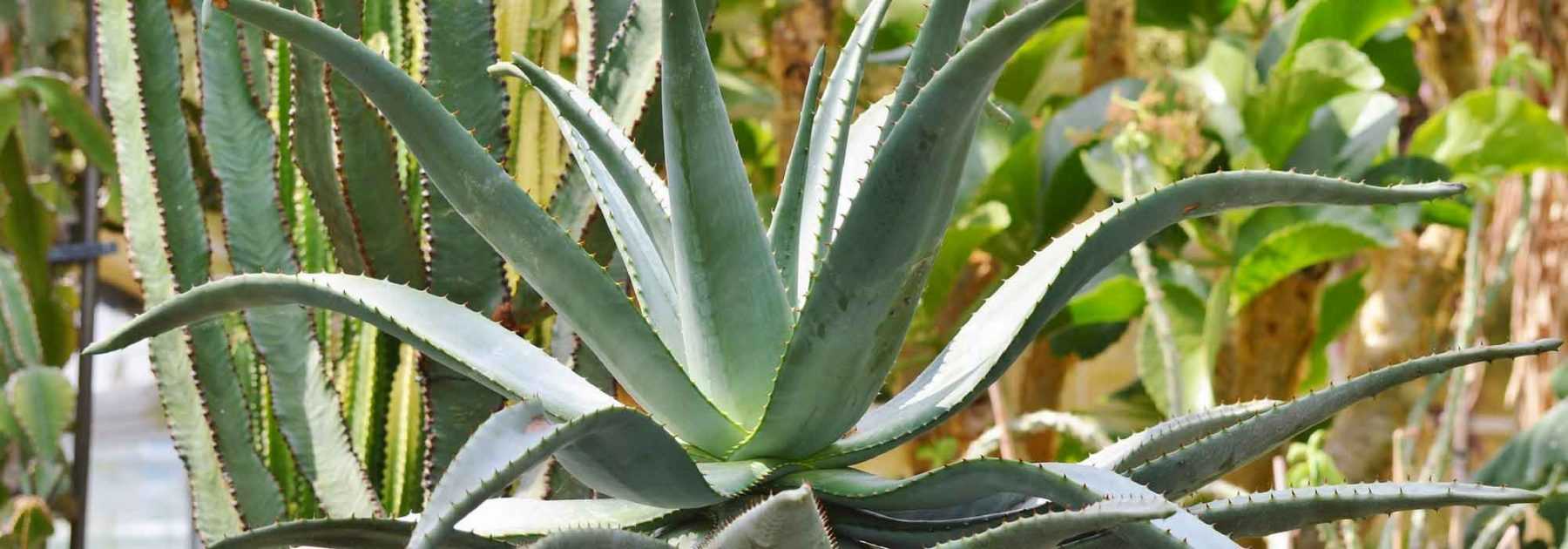
Agave: Planting, Growing and Caring
Contents
The Agave in a few words
- Agave is a succulent plant with broad, striking foliage
- Easy to grow in full sun and well-drained soil, it’s the ideal plant for arid climates
- Exemplary in its frugality, agave can go without watering for several weeks
- Semi-hardy, it’s a perennial favourite for Mediterranean and Atlantic coastal areas
- It makes an excellent rockery plant or gravel garden feature
Our expert's word
The Agave is a stunning succulent for arid climates, thriving in sunny spots with well-drained, poor soil where it can prove hardy down to around -10°C. It has now become an integral part of the landscape in Southern France.
Mexican Agave is used to produce agave syrup, a natural sweetener highly prized in cooking.
The beauty of a flowering Agave is matched only by its rarity! Living for several decades before producing a spectacular bloom, this perennial with unique sculptural form continues to captivate collectors!
While the giant Agave americana with its imposing silhouette is the most well-known, others like Agave attenuata, Blue Agave (Agave tequilana), or Agave parryi are equally beautiful and sometimes even more cold-hardy.
With its truly exotic character, Agave is perfect for adding an original touch to gardens spared from hard frosts or to south-facing terraces elsewhere.
It’s undoubtedly the centerpiece for a large exotic rockery, gravel garden, or sun-baked slope.
Complete your collection quickly by discovering our Agaves, these low-maintenance plants that are easy to grow in mild climates, perfect for creating a minimalist, mineral and strikingly exotic display.
Description and botany
Botanical data
- Latin name Agave
- Family Agavaceae
- Common name Agave
- Flowering juillet à août
- Height 0,45 à 4 m
- Exposure Soleil
- Soil type pauvre, bien drainé
- Hardiness -5°C-23°C
The Agave is a succulent plant native to the rocky desert and mountainous regions of Mexico, the southern United States and the Caribbean. It belongs to the Agavaceae family, like Yuccas or Tuberose.
The genus includes more than 200 species, the most common in our gardens in southern France being the Agave americana, a giant, which has naturalised all over the world today. It is complemented by numerous species and varieties obtained through crossbreeding: the Agave attenuata with few spines and a swan-neck inflorescence, the Agave filifera with filamentous foliage, A. ferox and Agave havardiana bordered by fierce spines, the Agave victoriae reginae, very noticeable for its white-margined leaf rosettes, or the blue agave of Mexico (A. tequilana), which, as its name suggests, is used to make “tequila”.
The Agave has rather slow growth but a good lifespan of 10 to 30 years. Its development is more or less moderate depending on the species, ranging from 15 cm for Agave parviflora up to 3 m in height and spread at maturity for the monumental A. americana.
The habit is more or less regular and compact, perfectly round with perfect geometry (Agave victoriae reginae), in the shape of an upright cup or more dishevelled with slightly curved leaves.
Over the years, the bush thickens thanks to its rhizomes capable of producing offsets all around the initial rosette to ensure its survival. It can become invasive where it thrives.
This succulent plant differs mainly in the number of leaves that make up its rosette.
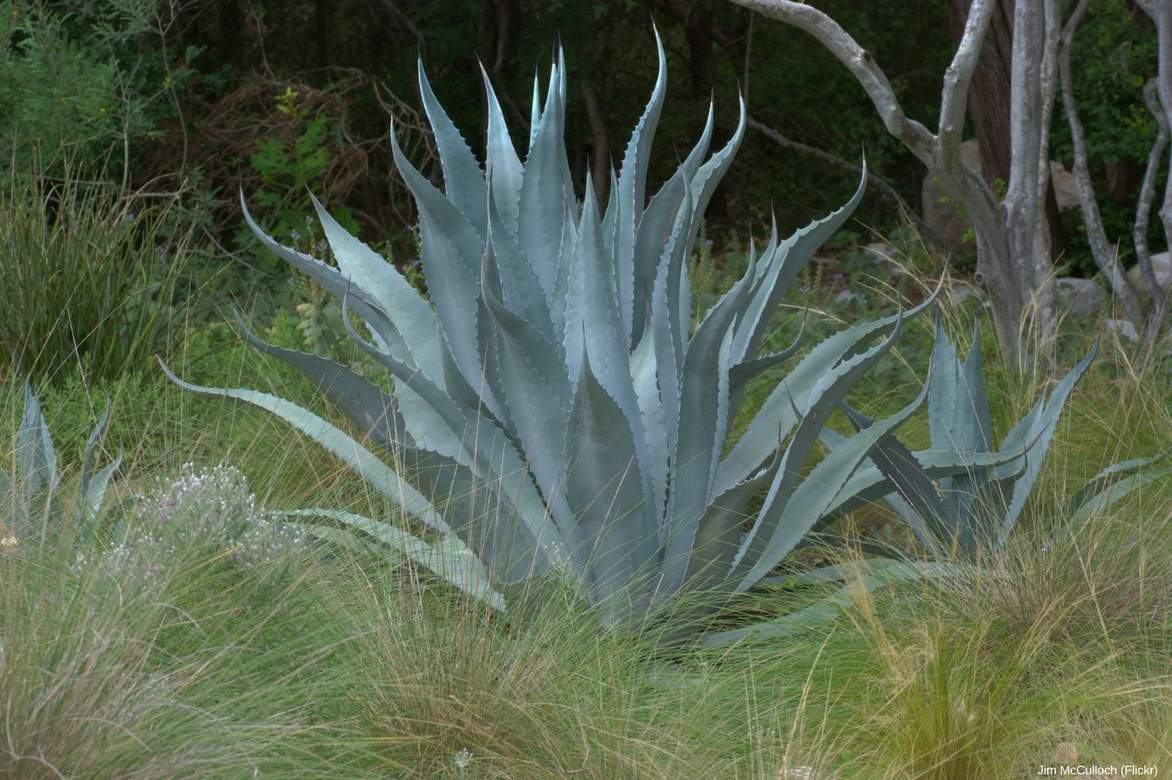
The rigid silhouette of the Agave americana counterbalanced by the lightness of the grasses.
This impressive perennial is highly appreciated for its often monumental and always remarkably graphic silhouette. The Agave develops like a large artichoke or flower bud, in a dense, radiant rosette, more or less open.
It is composed of very many crassulescent leaves, very wide at the base, fleshy and leathery, resting directly on the ground, overlapping each other. Only certain species such as Agave attenuata flourish around a stem or thick branched trunk bearing rosettes.
The leaves, 15 cm to 2.50 m long, flat, slightly convex, are stiff, tapered or paddle-shaped, more or less oval and narrowed at the tip. They are often toothed with sharp spines regularly spaced, true hooked teeth, black, orange-coppery to reddish in colour, which should be handled with care. They leave sinuous marks in the waxy epidermis of neighbouring leaves.
The tip of the leaves is sometimes equipped with a spiny point of the same tone. The foliage of the Agave filifera, devoid of spines, is bordered by long white filaments.
Dark green to yellowish green, light green margined with white in the Queen Victoria Agave, grey-green, blue-green bordered with yellow-cream in the Agave americana ‘Variegata’, grey-green bluish marked by a central white band in the Mexican Agave ‘Alba’, they take on all shades of green, grey and blue or offer graphic variegations. They are often covered with a whitish bloom.
The flowering, always impressive in large agaves, only appears once the plant has reached maturity, only after 10 to 40 years of cultivation. It is quite rare to see it flower in France. This flowering announces the death of the plant. In summer, tall, majestic flower spikes, reaching up to 10 m in height in Agave americana, emerge from the heart of the rosettes.
They are composed of a myriad of small tubular flowers, greenish yellow, silvery yellow or greenish white, sometimes red, with six tepals each, grouped in umbels, clusters or panicles. Very honey-producing and nectariferous, they attract many pollinating insects.
The inflorescences then give way to fruits, whose seeds will disperse on the ground as well as bulbils that will take root once the rosette collapses, provided your Agave flowers and forms them.
This flowering, as spectacular as it is unique, exhausts the rosette that gave birth to it, but generates the birth of a new offset. Most agaves flower only once before dying because they are monocarpic plants: the rosettes die after flowering and fruiting, in favour of many small peripheral rosettes that will thicken and flower in turn in the following years, thus ensuring the offspring.
The Agave is a rather frost-sensitive plant, easy to grow in regions with very mild winters, in full sun, in preferably poor, even stony, calcareous, sandy soil. Hardy down to about -12°C (the Agave havardiana will withstand frosts of around -23°C), in perfectly drained soil, in colder regions, it will be grown in large pots to be stored in winter.
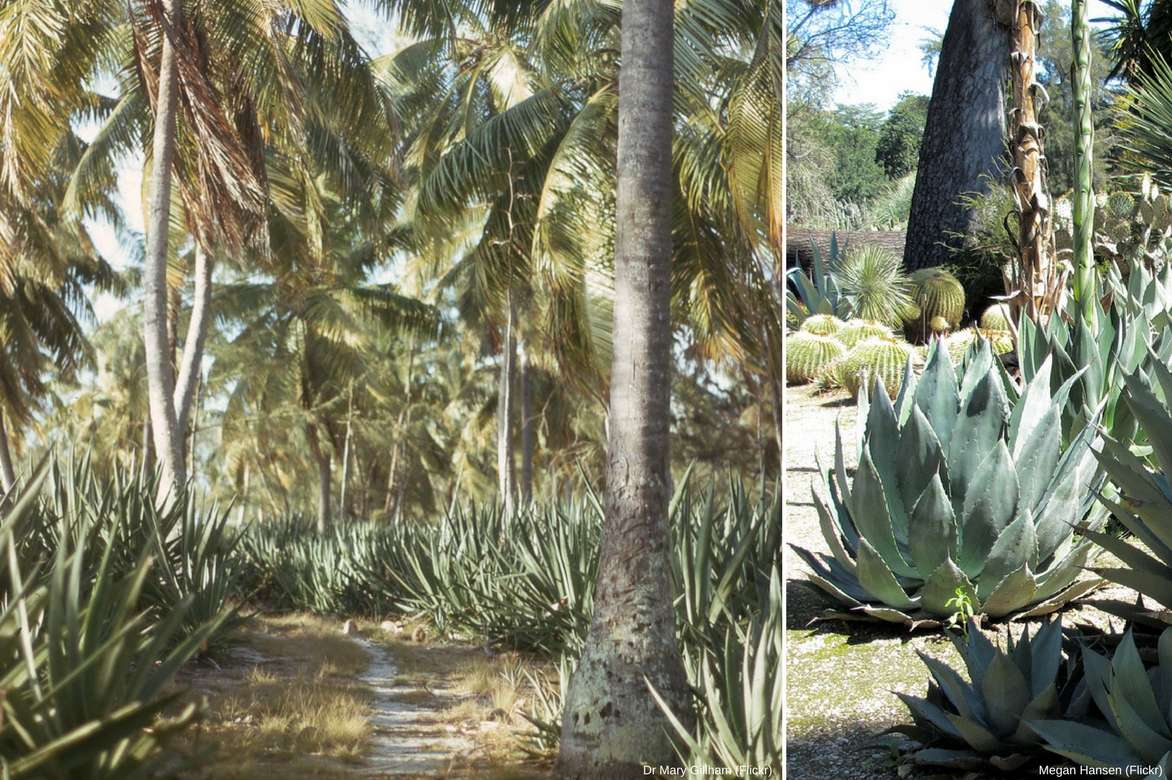

From left to right: Alley embroidered with Agave americana under palm cover – Agave havardiana accompanied by cacti.
In mild climates where frost is very rare, it will find its place in a large exotic rock garden, a dry slope, or in a wild raised bed.
The Mexican Agave is also used to make alcoholic beverages such as mescal, and Tequila made with flower buds of A. tequilana or agave syrup which can replace sugar in cooking.
Main species and varieties
The Agave family includes nearly 200 species and cultivars so diverse that they allow you to create a stunning collection quickly! Generally moderately hardy, a few Agave species stand out and can be grown in most of our regions.
The large Agave americana tolerates intense heat as well as cold down to -10°C. Agave havardiana is one of the hardiest in the genus, withstanding dry frosts of around -20°C.
→ Discover the hardiest Agaves
Some are spiky, others filamentous, they can be bluish, variegated with yellow or white, giant (3 m wide at maturity) or smaller (Agave potatorum), well-suited to container growing.
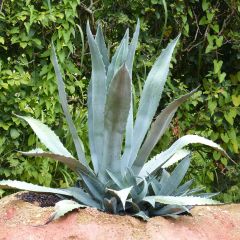
Agave americana
- Flowering time August, September
- Height at maturity 1,50 m
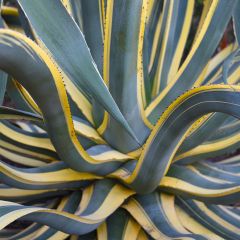
Agave americana Variegata - American Agave
- Flowering time August, September
- Height at maturity 1,50 m

Agave havardiana
- Flowering time August, September
- Height at maturity 50 cm

Agave victoriae reginae - Queen Victorias Agave
- Flowering time August, September
- Height at maturity 50 cm

Agave Kichijokan
- Flowering time August, September
- Height at maturity 40 cm
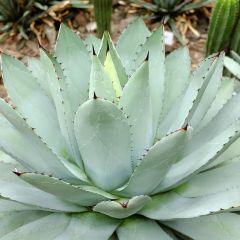
Agave potatorum var. verschaffeltii
- Flowering time August, September
- Height at maturity 60 cm
Discover other Agave
Planting
Where to Plant Agave
Agave is perfectly suited to dry, hot climates and poor soils. This perennial is somewhat frost-tender but can withstand light, short-lived frosts down to -12°C (sometimes lower for certain agaves), though only when planted in the ground in southern France, in poor, very well-drained soil. The drier the soil, the more frost-resistant it becomes. Elsewhere, its hardiness is often put to the test.
Agave thrives in heat, full sun, and arid, cactus-type soils. It is highly drought-tolerant and can endure extreme temperatures. In favourable regions, plant Agave in full sun in a sheltered spot, preferably on sloping ground where water never pools.
While this striking succulent proves fairly hardy in dry soil, it struggles with excess moisture, especially in winter, which would almost certainly cause rot. It also dislikes winter rains and heavy, waterlogged soils.
In mild climates, it tolerates sea spray well.
Choose a location that accommodates its expansive growth: after a few years, Agave can become exuberant in the ground, with larger varieties reaching surprising dimensions—up to 4-5 metres in diameter and height!
Select an open area and keep spiny agaves away from pathways and young children.
In regions with harsh winters, grow it in a very large pot sheltered on the patio, moving it indoors in winter or to a cold greenhouse to protect it from severe frosts.
With its imposing, strikingly architectural form, this succulent anchors exotic, wild landscapes in large dry rockeries, south-facing slopes, and gravel beds, adding grandeur.
In pots, it lends a bold exotic flair to patios and small urban gardens. Paired with cacti, it recreates a desert-inspired setting.
When to Plant Agave
Plant Agave in spring, ideally April to May, or in late summer, August to September.
How to Plant Agave
If your soil retains moisture, plant Agave on a slope for natural drainage. Choose a sunny, warm, sheltered spot. Mind spacing for optimal growth: space plants at least 40 cm apart for small species and at least 3 metres for larger ones.
- Dig a deep hole (50 cm, or 80 cm for large agaves)
- Add coarse stones or gravel (20 cm thick) at the base
- Mix half river sand or pumice with the excavated soil
- Plant without burying the crown, backfilling with the mix
- Lightly firm the soil with your foot
- Spread a layer of gravel or pebbles around the base to keep it dry and prevent rot—it will store daytime heat and release it at night
- Water thoroughly, then withhold water for 2–3 weeks to encourage establishment
- Afterward, water sparingly and only in prolonged dry spells, letting the soil dry between waterings
Planting Agave in Pots
The substrate must be very free-draining to avoid soggy roots. Place it in full sun in a sheltered spot. Heavy clay soil harms its hardiness: improve drainage with gravel, clay pebbles, large stones, or a rocky mix.
- Use a large terracotta pot (min. 60 cm diameter) with a drainage layer (gravel or clay pebbles)
- Plant in a mix of 50% compost and 50% clay pebbles or pumice
- Surround the base with gravel or pebbles to prevent crown rot
- Water after planting, then monthly (or biweekly in peak heat). Always let soil dry between waterings.
- Apply a low-nitrogen fertiliser 3–4 times in summer
- Once frost risk passes, reintroduce the pot to sun gradually if overwintered indoors to prevent leaf scorch
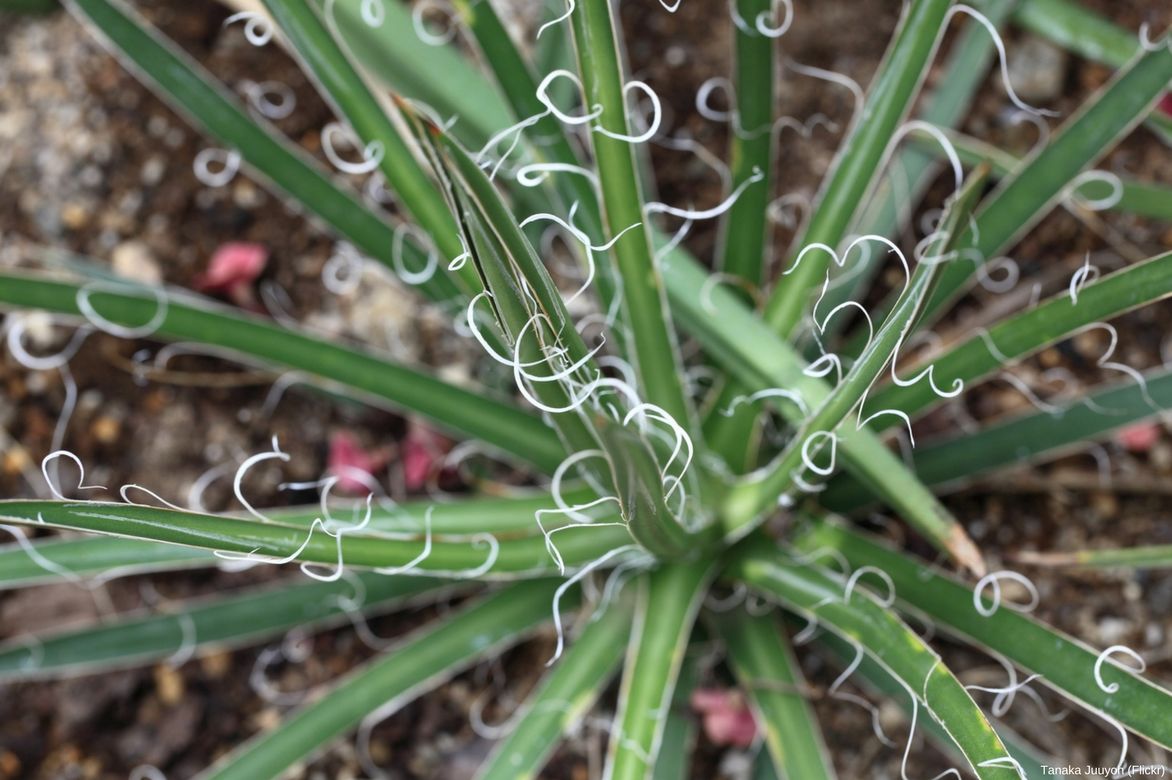
The Agave filifera is adorned with long white filaments.
Care and maintenance
Once well established, the Agave requires no special care. It is easy to grow in regions where frost is not severe.
In the ground
Protect the base with a thick mineral mulch of gravel. This is a plant with low water needs as it can store water and therefore requires little watering.
In summer: water once every two weeks, no more. Once established in well-draining soil, it will become increasingly drought-resistant and will only need watering during prolonged dry spells.
Always allow the soil to dry out completely between waterings. In winter, stop watering altogether – it will be content with rainwater alone.
In winter, in very wet regions, you can protect the plant from winter rains by placing a raised transparent plastic sheet above it.
Pruning is unnecessary. Maintenance simply involves a spring clean. In March, wearing thick gloves, tidy up old foliage – using secateurs or shears, cut back any blackened, damaged or withered leaves right to the base.
In pots
During summer, feed the plant with a low-nitrogen liquid fertiliser labelled ‘for cacti’, diluted in the watering can.
Bring the pot indoors before the first frosts, placing it in a bright but cool room (between 0 and -5°C). Potted agaves are more sensitive to cold.
In winter, keep the soil dry.
→ Learn more with Virginie’s advice for overwintering an agave
Diseases and potential pests
Planted in well-draining soil and kept warm, the Agave shows good resistance to diseases. It truly fears only two things: excess water and freezing temperatures.
Young shoots may however suffer attacks from mealybugs, recognisable by the cottony clusters they leave on the leaves. They slow growth and discolour the foliage. Remove the pests with a cotton pad soaked in 90°C alcohol, then treat with rapeseed oil sprays. Repeat two or three times at 15-day intervals.
If black spots appear on the leaves, it is likely due to excessive humidity: cut the leaves back to the base. Most Agaves are hardier than one might think. Cold itself is not really a problem, down to -7°C. What they fear most is winter moisture. Excess water in the soil encourages the development of fungal diseases, leading to root rot.
→ Read also: Agave Weevil: Identification, Treatment and Effective Prevention.
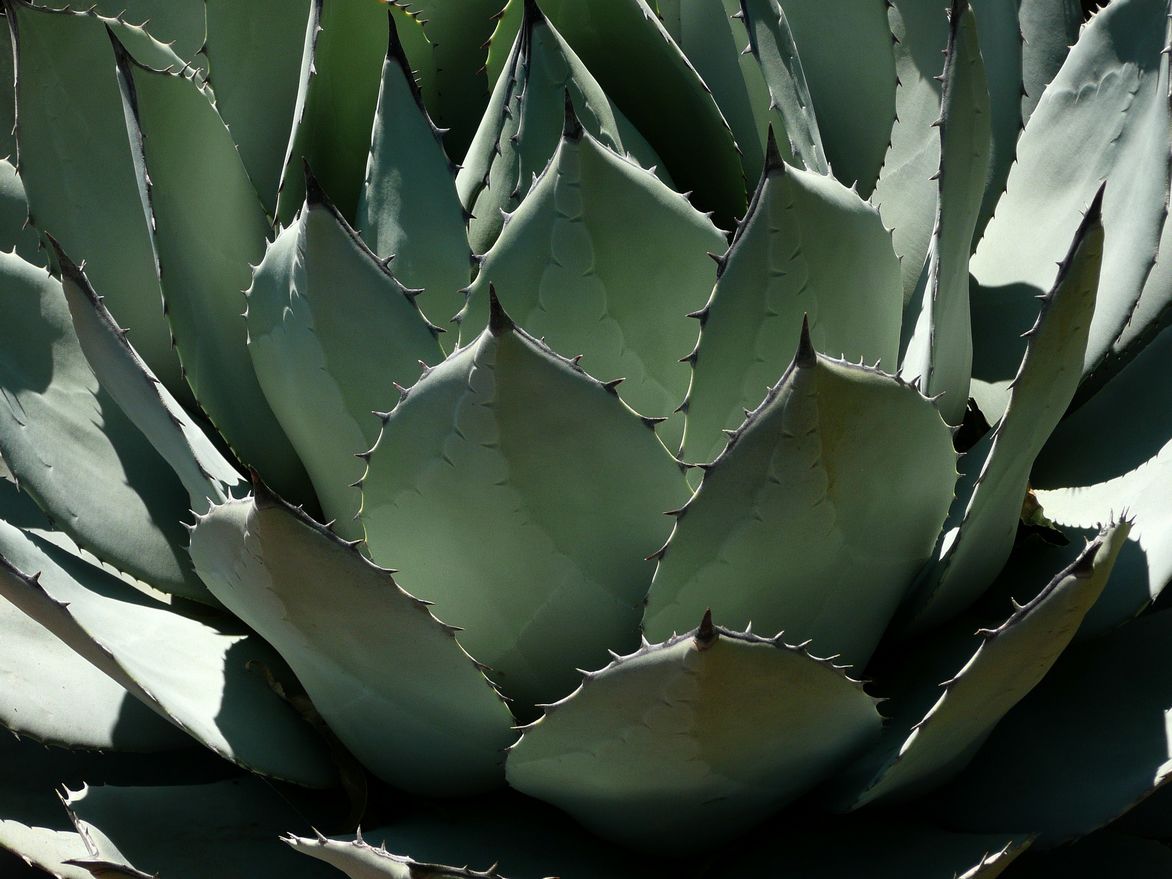
The leaves of Agave parryi ‘Huachucensis’ are beautifully bluish and edged with spines.
Propagation
While sowing is possible in February-March, it is very easy to propagate by taking young offsets at the same time. Most agaves naturally produce suckers around the rosette. It is very easy to detach them to propagate the plant from well-developed offsets (if they become too numerous, read more about it in Invasive Agaves: A Practical Guide to Removing Them).
By dividing offsets
- Using a spade, gently lift the offset
- With secateurs, separate the small agave from the mother plant
- Let the sucker dry in the sun for a few days
- Transplant it if sturdy enough, or pot it on a bed of gravel in a mix of peat and river sand
- Spread a layer of sand on the surface
- Place the pot in a sheltered spot
- Do not water for 15 days to allow small roots to form quickly
- Repot in a larger container and plant out in the ground the following spring
Pair with
Agaves, whether small or gigantic, are always a striking focal point in a garden or when potted on a terrace.
The undisputed star of dry and wild gardens basking in full sun, they help structure minimalist exotic scenes inspired by desert landscapes.
They always bring character and grandeur to any setting.
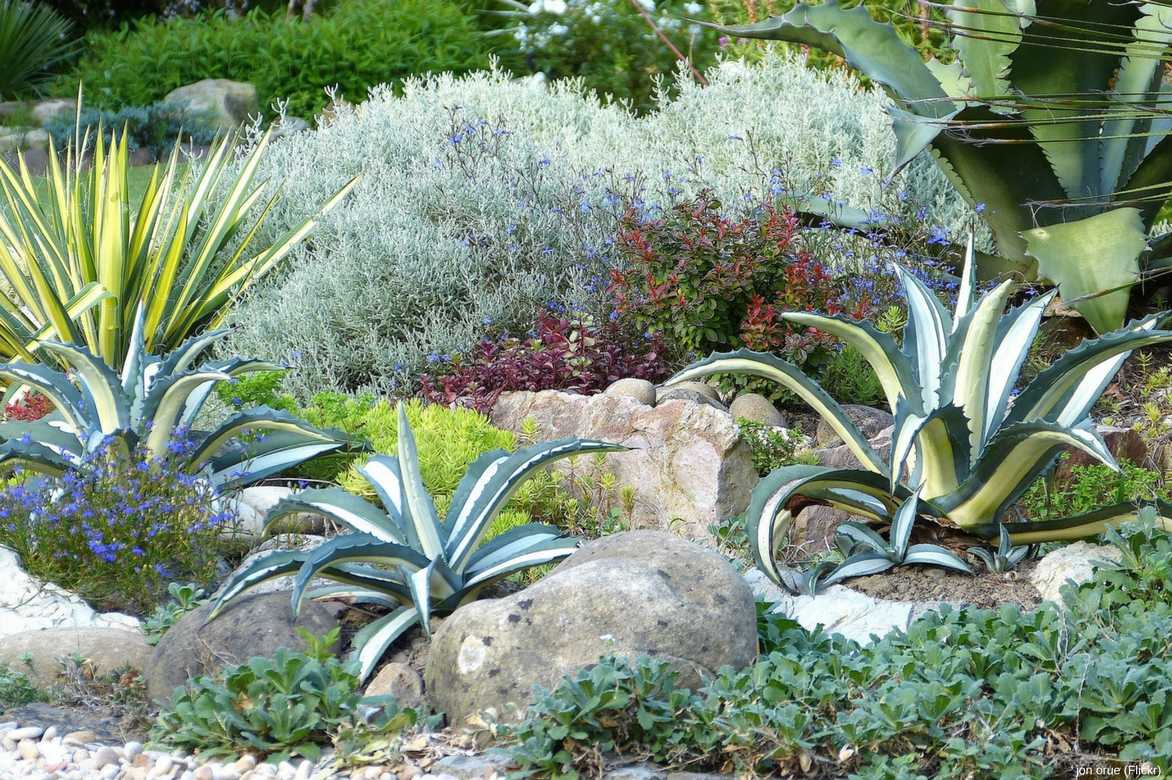
A beautiful rock garden combination: Agave americana ‘Mediopicta Alba’, Agave montana, Yucca filamentosa ‘Color Guard’, Santolina chamaecyparissus, Berberis thunbergii ‘Admiration’, Lithodora diffusa ‘Heavenly Blue’, Saxifraga urbium, Linum perenne, Sedum reflexum ‘Angelina’, Sedum ‘Bertram Anderson’.
With their architectural form, large agaves (A. Americana) are perfect for creating spectacular focal points in beds of Mediterranean perennials like Giant Fennel, Hesperaloe parviflora, Tower of Jewels (biennial) or the gigantic Romneya coulteri (Tree Poppy). Just be mindful of shade from taller perennials – agaves need full sun!
In mild climates, agaves thrive in rock gardens alongside equally drought-tolerant plants like Prickly Pear (Opuntia ficus-indica) and other hardy cacti such as Cylindropuntia imbricata and Opuntia humifosa, or even hardy cacti and Aloe Vera.
For a purely exotic display, choose other plants that can withstand temperatures down to -10°C: Crassulas, Cordylines or even Palms.
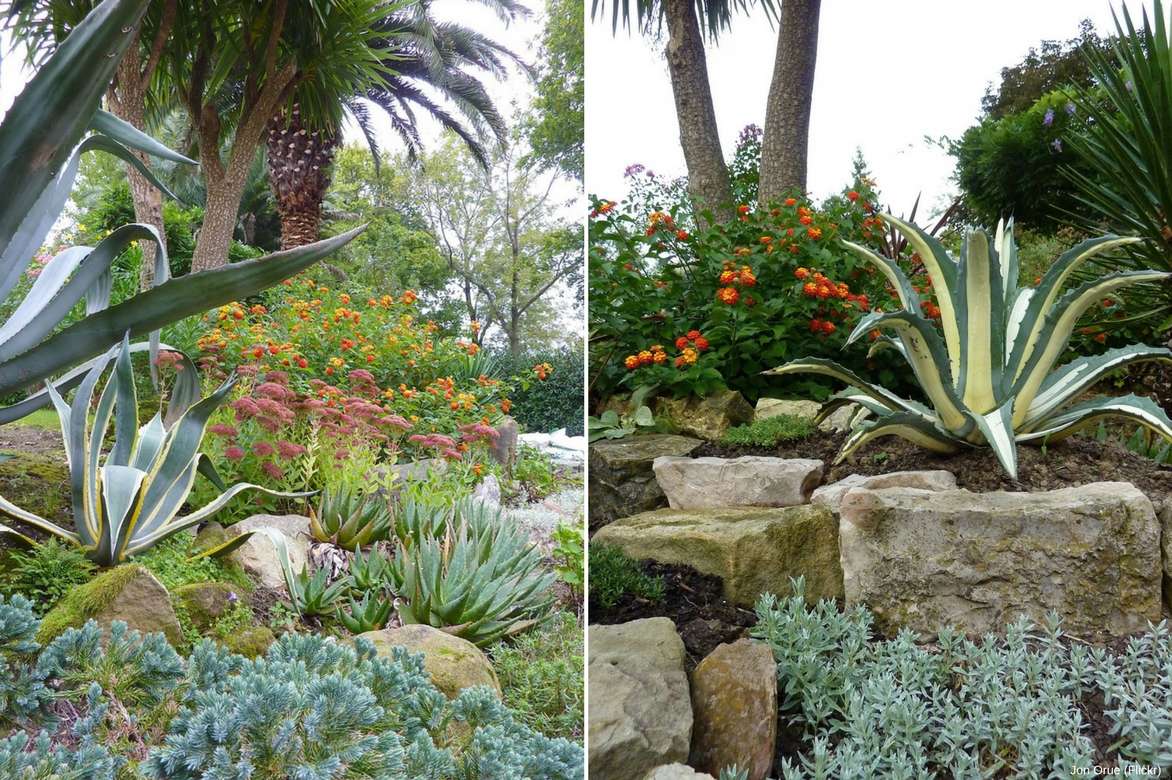
An exotic garden combination: Agave americana, Agave americana ‘Variegata’, Aloe nobilis, Lantana camara ‘Lucky Red Flame’, Sedum ‘Herbsfreude’, Juniperus squamata ‘Blue Carpet’, Cordyline australis.
Their graphic silhouette stands out beautifully in mineral settings, accentuated by ornamental grasses like Miscanthus or Stipa gigantea.
Surround agaves with drought-tolerant groundcovers like Cape Daisies (Osteospermum), dwarf Artemisia, Delosperma, Rock Purslane, Thymes and Sedums.
In shrub borders, they pair well with Fremontodendron californicum (a sun-loving climbing shrub), Australian Rosemary or creeping Blueblossom (Ceanothus thyrsiflorus repens).
→ Discover more beautiful agave planting combinations
Useful resources
- Cacti in Northern France?
- Discover our collectible agaves on our website
- Planting agaves directly in the ground is possible!
- Our advice sheet: Pairing agaves
- Our advice sheet: Choosing an agave
- Our advice sheet: Growing agaves in pots
- Our advice sheet: Overwintering agaves
- Our advice sheet: Hardier agave varieties
- Our advice sheet: Agaves – the most beautiful varieties
- Our advice sheet: Creating a lush exotic garden and Creating a dry exotic garden
- Welcome agaves, yuccas and cacti into your garden!
- Subscribe!
- Contents


































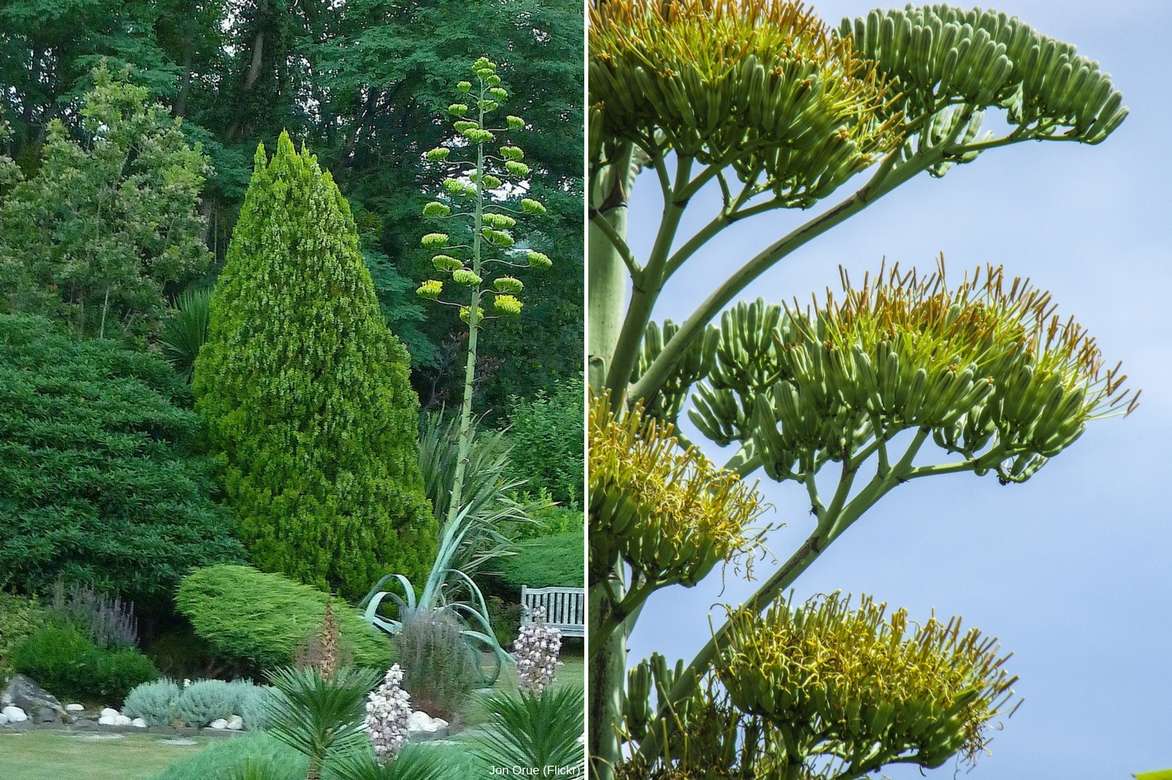
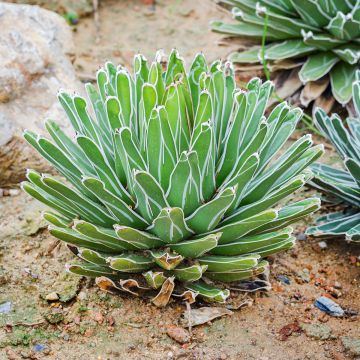

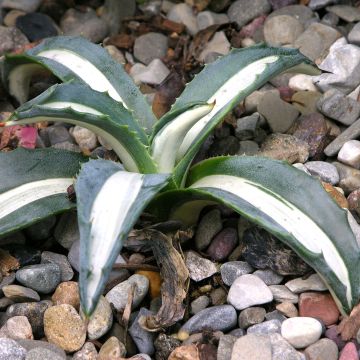
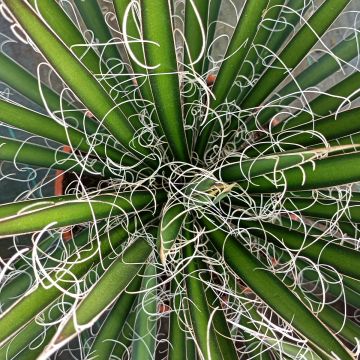
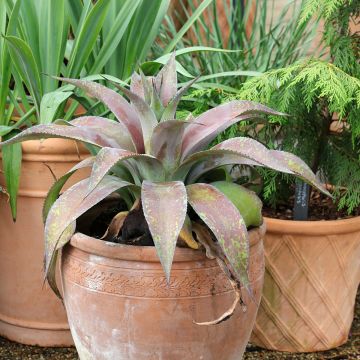
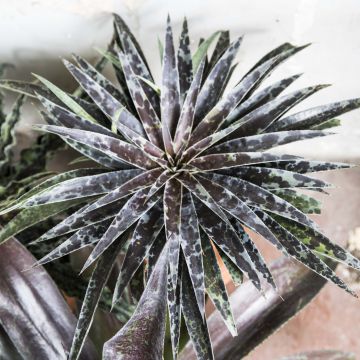
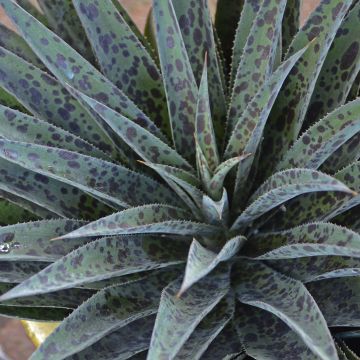
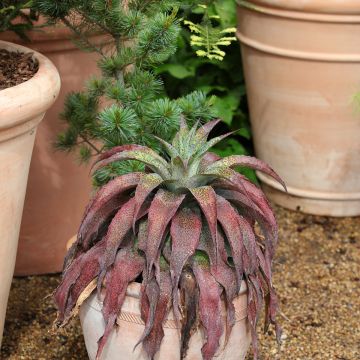
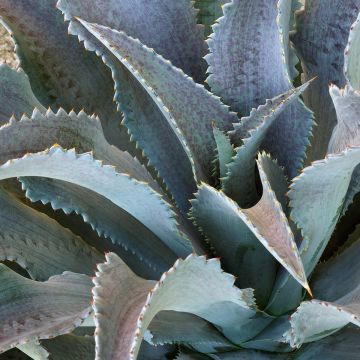
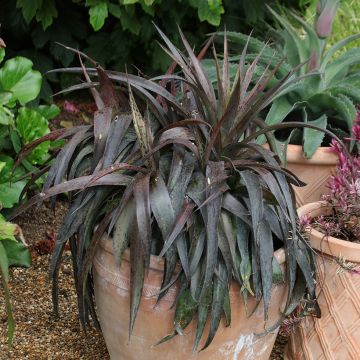


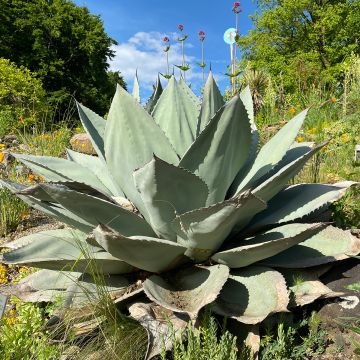
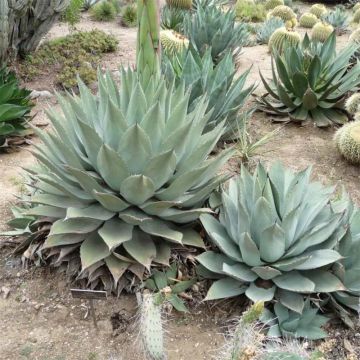
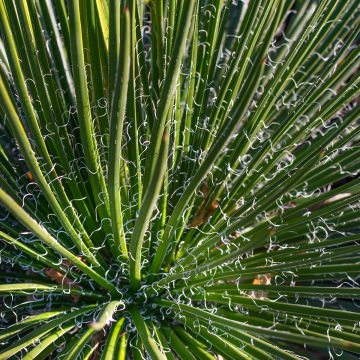

Comments